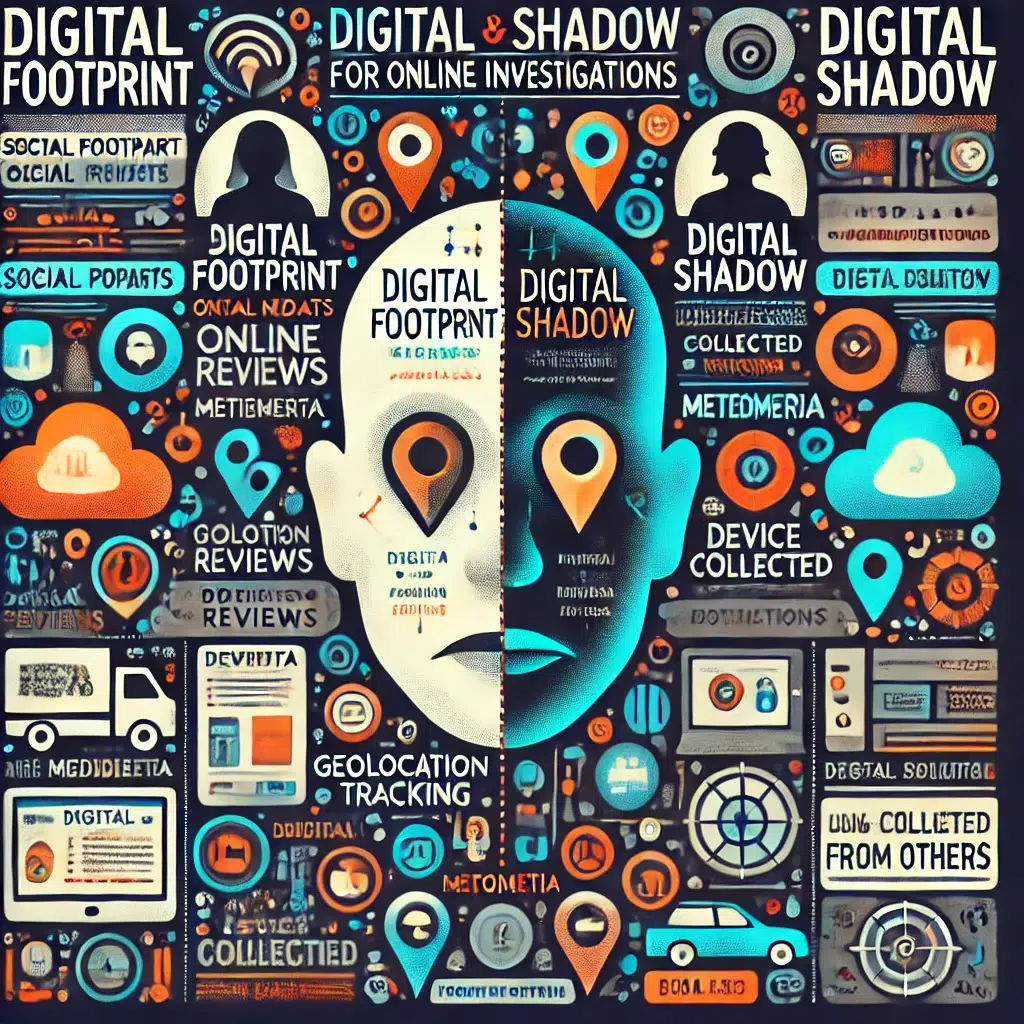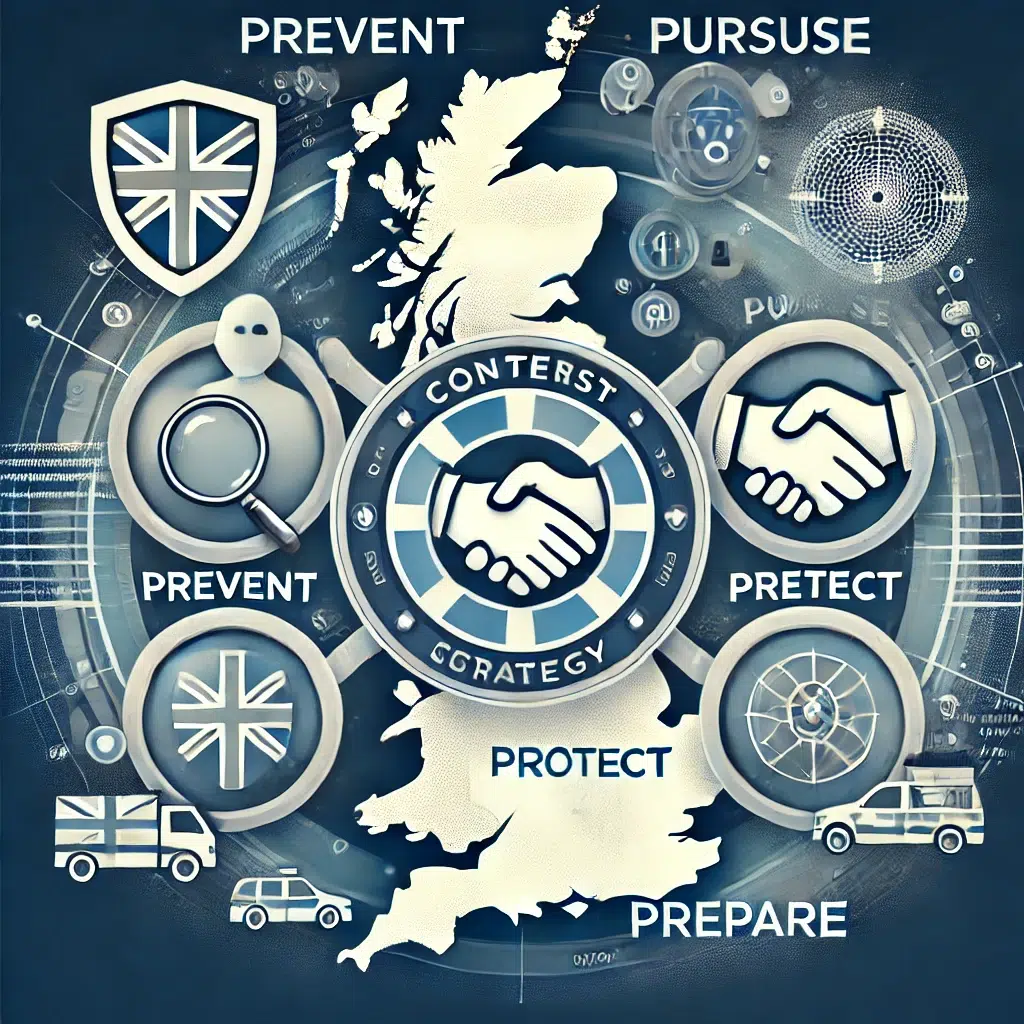
Understanding Digital Footprint and Digital Shadow in Online Investigations
In the world of online investigations, two key concepts often come up: digital footprint and digital shadow. While both relate to the traces people leave online, they have distinct meanings and implications. Understanding these concepts can help investigators uncover valuable insights when analysing someone’s online presence.
What Is a Digital Footprint?
Your digital footprint is the trail of data you intentionally leave behind through your actions and interactions online. These activities are typically conscious, meaning you have some level of control over them.
Examples of Digital Footprints
Social Media Activity
Posts, likes, shares, and comments on platforms like Facebook, Twitter, or LinkedIn.
Example: An individual shares holiday photos on Instagram, revealing their travel dates and location.
Online Reviews
Reviews left on websites such as TripAdvisor, Amazon, or Google.
Example: A user writes a review for a restaurant, mentioning their visit date and overall experience.
Blogging or Website Content
Articles, blog posts, or other content created and published online.
Example: A professional writes articles on Medium, sharing expertise and insights in their field.
Public Profiles
Information shared on platforms like LinkedIn or public forums.
Example: Someone lists their job title, employer, and professional skills on LinkedIn.
Public Check-Ins
Using apps like Facebook or Foursquare to check into locations or events.
Example: A person checks in to a concert, showing they were in a specific city on a particular date.
What Is a Digital Shadow?
Your digital shadow consists of data about you that is collected online without your direct input or explicit knowledge. Unlike your digital footprint, much of this data is gathered passively by third parties.
Examples of Digital Shadows
Metadata in Photos
Geolocation data embedded in images taken with smartphones or cameras.
Example: A photo uploaded to a blog includes EXIF data, revealing the GPS coordinates of where the image was taken.
Browsing and Search Histories
Information tracked by websites, search engines, or cookies.
Example: An e-commerce site logs your browsing habits and displays targeted ads based on the items you viewed.
Tags and Mentions by Others
Instances where someone else tags or mentions you online.
Example: You are tagged in a group photo from an event, even if you didn’t post it yourself.
Data Collected by Devices
Logs from smart devices like fitness trackers or smart home assistants.
Example: A fitness app tracks your jogging routes and uploads the data to the cloud, creating a pattern of your daily habits.
Third-Party Sharing
Information shared by apps or platforms without your knowledge.
Example: A mobile game app shares your location data with an advertising network.
Old or Forgotten Information
Archived or cached versions of deleted content.
Example: A deleted blog post remains accessible via the Wayback Machine or search engine caches.
IP Address Data
Logged by websites or services when you visit them.
Example: A website records your IP address, which can be used to determine your approximate location.
Key Differences Between Digital Footprint and Digital Shadow
| Aspect | Digital Footprint | Digital Shadow |
|---|---|---|
| Control | Created and controlled by the individual. | Created passively or without the individual’s knowledge. |
| Source | Social media posts, emails, blog posts, etc. | Metadata, tags, third-party tracking, etc. |
| Visibility | Usually intentional and public. | Often unintentional and harder to detect. |
Relevance to Online Investigations
For investigators, both digital footprints and digital shadows provide crucial insights. Here’s how they can be used in real-world scenarios:
1. Tracking Movements
- Digital Footprint: Social media posts showing check-ins at specific locations.
- Digital Shadow: Geotagged metadata in uploaded photos, revealing precise locations.
2. Uncovering Affiliations
- Digital Footprint: A LinkedIn profile listing volunteer activities.
- Digital Shadow: Being tagged in photos from events or gatherings, even without posting about them.
3. Identifying Patterns
- Digital Footprint: A user writes reviews about fishing equipment.
- Digital Shadow: Fitness app data shows jogging routes near rivers, suggesting frequent fishing trips.
Case Studies and Real-World Examples
1. The Use of Social Media in Criminal Investigations
In 2018, a teenager in the UK was convicted of terrorism offences after investigators analysed his digital footprint on Twitter, where he openly posted extremist content. Additionally, his digital shadow revealed connections to online forums and private messaging groups that were tracked by authorities.
2. Geolocation Metadata Exposes a Fugitive
A high-profile case involved a fugitive who uploaded a photo to a public social media account. Investigators used the geolocation metadata embedded in the photo to determine his exact location, leading to his arrest.
3. Online Reviews Reveal Fraudulent Activity
An investigation into a fraudulent business scheme in 2021 was aided by reviews left on Google and Yelp. The digital footprint of the business owner’s public responses to negative reviews helped confirm their involvement, while the digital shadow from IP logs tied to anonymous review accounts revealed fake positive reviews.
4. Fitness App Data and a High-Profile Robbery
In 2018, a burglary gang in the UK used a fitness app’s public data to identify targets who were away from home. On the other hand, law enforcement used the same app’s metadata to track one of the suspects, revealing their participation in a robbery through shared jogging routes near the crime scene.
Conclusion
Understanding the difference between a digital footprint and a digital shadow is essential for online investigations. A person’s digital footprint offers a clear view of their online activity, while their digital shadow provides hidden clues that can reveal more about their behaviour, habits, and affiliations. By combining these two types of data, investigators can build a comprehensive picture of an individual’s online presence and uncover critical information for their investigations.
Whether you’re an investigator or just someone curious about your online exposure, knowing these concepts helps you better navigate and understand the digital world.




